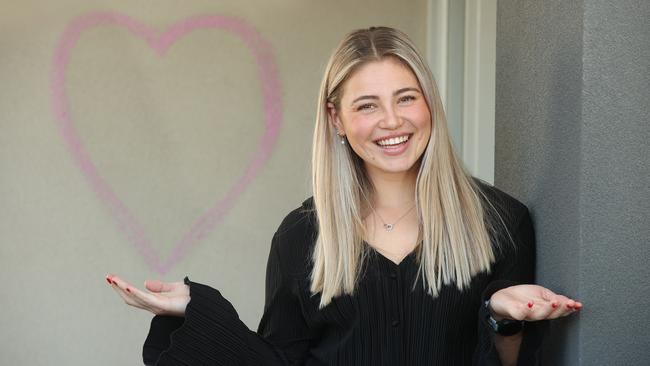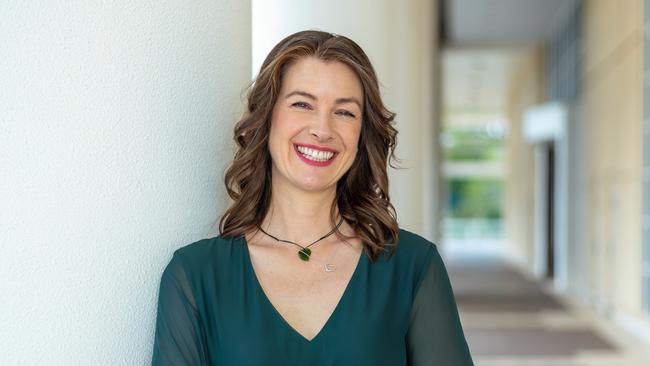Geelong’s man drought: Why there are more women than men, and how its impacting the dating world
Data has revealed which Geelong suburbs are suffering from “gender droughts”. And this could be impacting the dating scene for singles.

Geelong
Don't miss out on the headlines from Geelong. Followed categories will be added to My News.
Holly Ross knows finding other single people to date in her immediate area is not an easy thing to do.
She’s a single young woman living in one of Geelong’s suburbs least populated by men.
Ms Ross lives close to the boundary of Armstrong Creek and Charlemont.
There are 93 men to every 100 women between 20 and 44 years old in the Barwon Heads-Armstrong Creek area and 92 men to every 100 women in Charlemont.
The 21-year-old believes the number of men and women in an area can impact the local dating landscape.
“It makes for an unbalanced playing field,” she said.
“It’s either more difficult for men or more difficult for women to find the right person for them when there is minimal opportunity to do so.”
In the Geelong region there are 96 men to every 100 women, equating to almost 6000 more women.
Professor Louise Johnson of Deakin University’s Alfred Deakin Institute is a social geographer, and said she had a few possible explanations for the population divide.
Dr Johnson said affordable housing was a big factor and she could imagine it was a serious option for well-educated young women to move and live in Geelong with work from home options and a reasonable commute to Melbourne.
She said some suburbs also contained a lot of social housing which was increasingly filled by people with few options, such as older single women and women with children.
“Those demographics are disproportionately represented in social housing applications due to their social and financial position whether there has been marriage breakdowns, domestic violence or the women do not have good superannuation,” she said.
The region’s areas with abundant men included Lara (123 men to every 100 women between 20 and 44 years old), and Golden Plains south, where there were 109 men to every 100 women aged between 45 and 69, the Australian Bureau of Statistics data revealed.
Dr Johnson said it was harder to explain why some suburbs had more men.
“Lara is still a big rural and agriculture based area so that may be an explanation based on where people work and the lifestyle,” she said.
Point Lonsdale and Queenscliff had significantly more women than men in older age demographics.
Dr Johnson said another factor in Geelong and the region’s population was it was historically a retirement centre, particularly for people from rural and western Victoria.
“There’s something about retiring in a reasonably large town that is not a metropolis that is appealing with good healthcare, affordable housing and good aged care,” she said.
”An influx of people may move to Geelong for retirement and many may move as couples but the women tend to live longer.”

Mojo Mingle facilitator and dating coach Sarah Rus came into the business after ditching her career as a nuclear medicine technologist, choosing to instead help single people build confidence as they navigate towards finding healthy love.
She said the breakdown of population in the Geelong region was irrelevant, as the key was the number of people who are intentional about dating.
“If there are 10,000 single, heterosexual men, between 30 to 60 who are also open to being in a relationship with a career-driven woman, but they don’t use apps well, focus solely on work, rarely attend social gatherings to meet new people, and make quick trips to the shops, how are the women going to find them to connect with them?” she said.
“Many single people in a “victim mindset” complain that the (dating) apps don’t work, or there are too many men and not enough women.
“Typically there are more men on certain apps.
“If you have 10,000 men registered on apps to a region but only 1000 of them are actively using the app with the intention to meet someone for a short-term or long-term relationship, then again, the total number of men is irrelevant on the apps.
“What’s more important is the number of men using the apps intentionally, and vice-versa.”

Ms Ross has not let the population statistics keep her from diving into the dating pool.
“It can be difficult to find single people my age in my area unless you use dating apps to explore or go out on the town and meet people,” she said.
“Initially I don’t take any notice of where a man is from but when I start speaking to them more I tend to find they live 30kms or more away from me.”
Ms Rus said single women and single men sought help looking for love as much as the other.
However, she said it often seemed only a small fraction were serious about finding love and were ready for a healthy relationship.
Ms Rus said while in summer singles tended to be more active, hope was not lost.
“Those who are intentionally dating still have plenty of options available to them for meeting singles online and offline,” she said.
“It might be easier now to find other intentional daters as there’s less “fish in the sea” about to filter through.”
More Coverage
Originally published as Geelong’s man drought: Why there are more women than men, and how its impacting the dating world




